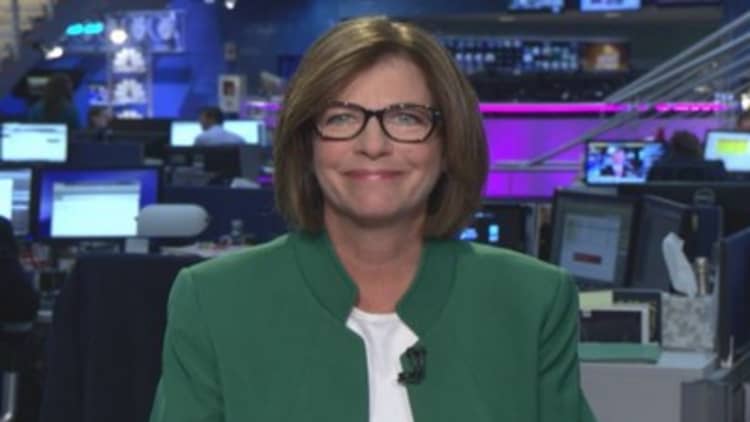
The stars aligned against stocks Wednesday, but the market could snap back depending on what the European Central Bank tells markets Thursday.
The big event for Thursday is the ECB's rates meeting and press briefing by ECB President Mario Draghi. The ECB kept rates unchanged, and traders were lookin ahead to the 8:30 a.m. ET briefing by Dragh for detail on its upcoming asset purchase program. The ECB moves towards more easing, just as the Fed is set to end its bond buying program later this fall.
Win Thin, senior currency strategist with Brown Brothers Harriman, said a lot of investors are short euros going into the ECB meeting. That could result in a short-covering rally, depending on what comes out of the ECB. "Look for a relief rally as an opportunity to sell at a better level," he said.
The loosening of ECB policy comes as the Fed is getting set to tighten next year, after its quantitative easing program ends this fall. That divergence in central bank policy has sent waves across markets, and driven the euro and dollar further apart in relatively volatile trading.
Read MoreWatch Art Cashin: Be wary of Ebola's effect
"Tomorrow will probably be driven by what happens in Europe," said Scott Redler, partner at T3 Live.com. "They're going to come out with something that could bounce the market. If they don't come out with anything substantial, we could see (S&P) 1,927 pretty quick, which is where some money would come in to (go to) work." If the ECB announces a surprise in its QE program, that could force a short covering rally, he said.
The Wednesday closed at 1,946, a 1.3 percent drop of 26 points to a level below the 100-day moving average. The 1,927 level is the 150-day moving average.
Read MoreOctober off to its worst start in 3 years
Redler, who follows the market's short-term technicals, said Wednesday was one of the few days this year that he did not have a long equity position. "I think even the bulls would like to see (Thursday open) 20 handles lower, versus 20 handles up. If you took down risk, it's hard to buy into a big down day like today. The last thing traders would want is to have reduced risk and you didn't buy today, so if it gaps up it's going to feel like a short squeeze and a chasing move."
The small-cap Russell 2000 fell 1.4 percent to 1,085, and is now in official correction territory–10 percent off its July high.
"The Russell has been a head wind and now is comfortably below the 200-day which is never a good sign and it's 10 percent off its highs," Redler said.
Redler said 1,927 would be a test, and he does not see the S&P falling below the 1,900 to 1,927 range. "The 150-day is the moving average that held in the first down move that started this year in January," he said.
Read MorePotential for 500-point drop next month: Trader
Recent volatility has spooked traders in part because from a seasonal standpoint, October is often a volatile month. But when there's a sell off, there's often been a turn around that also started in October. Bespoke, in a report, said that there have been 12 times since 1928 that the S&P 500 fell more than 1 percent on Oct. 1. All but two times, the index moved higher on the next trading day, for an average gain of 0.9 percent. In those same years, for the month of October, the index was up 8 of 12 times, with an average gain of 3.8 percent.
Markets reacted strongly Wednesday to disappointing PMIs both in Britain and Germany, which saw contraction. In the U.S., the ISM manufacturing index fell to 56.6 from August's 59 level–still well in the zone signaling growth.
Read MoreFear factors that are crushing stocks
"It speaks to a good manufacturing climate but not great. It does not speak to an environment where the Fed has to move faster though you're going to get a more buoyant bond market," said Adrian Miller, director of fixed-income strategy at GMP Securities.
Miller said Draghi has hoped to expand the ECB's asset purchase program to include different types of credits, because there is not as much liquidity in asset-backed securities in Europe.
"Will he be able to reach for more, lower quality ABS in order to broaden the program enough to increase the efficacy of getting the money into the real economy?" Miller asked. "That coupled with the mediocre TLTRO (targeted long-term refinancing operation) is going to call into credibility what the ECB can deliver."
Bond prices also moved higher and yields fell as investors reacted to the first case of a patient coming down with Ebola in the U.S.


